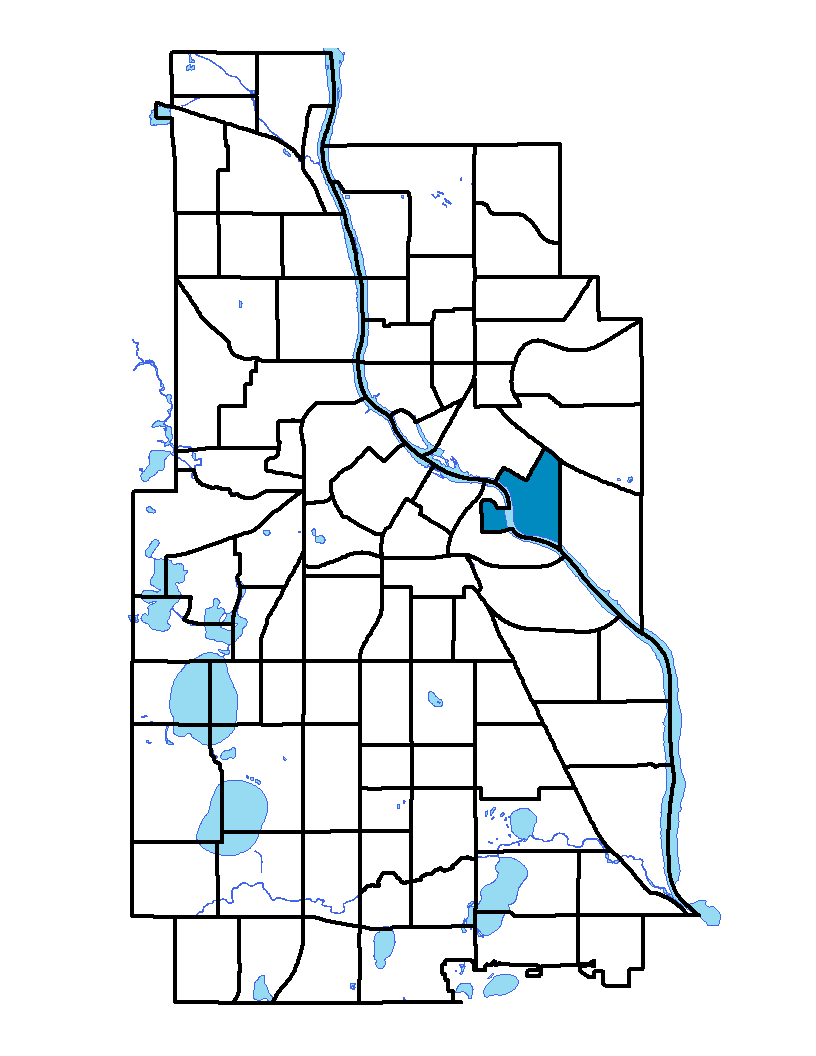"Compare Neighbordhoods" feature is not available in the archived version.
University of Minnesota
The University neighborhood is located east of downtown Minneapolis. The Mississippi River divides the neighborhood into the west bank and the east bank. The neighborhood is occupied almost entirely by the University of Minnesota, hence its name. The University of Minnesota is one of the top public universities in the country and has facilities throughout the state. The main campus in Minneapolis occupies about 2,000 acres of land. The University of Minnesota, Twin Cities includes the Minneapolis and Saint Paul campuses.
To learn more about the neighborhood association visit: www.marcy-holmes.org/neighborhood
Indicator Details
| Indicators |
Primary Domain |
Indicator Value | Rank | Tier |
|---|---|---|---|---|
| Business Retention | Economic Health | -7.3% | 84 | Bottom |
| Access to Mainstream Financial Services | Economic Health | 36.9% | 70 | Bottom |
| Local Business Vitality | Economic Health | 43.3% | 83 | Bottom |
| Reading Proficiency | Educational Opportunities | -% | - | Data N/A |
| Adult Educational Attainment | Educational Opportunities | 81.8% | 66 | Bottom |
| High School Graduation Rate | Educational Opportunities | -% | - | Data N/A |
| School Readiness Scores | Educational Opportunities | -% | - | Data N/A |
| Preschool Enrollment | Educational Opportunities | 100.0% | 1 | Top |
| Residential Proximity to Traffic | Environmental Hazards | 13.2% | 49 | Middle |
| Proximity to Brownfield Sites | Environmental Hazards | 13.2% | 60 | Bottom |
| School Proximity to Traffic | Environmental Hazards | -% | - | Data N/A |
| Proximity to Superfund Sites | Environmental Hazards | 81.6% | 75 | Bottom |
| Toxic Releases from Facilities | Environmental Hazards | 39.5% | 61 | Bottom |
| Public Assisted Households | Employment Opportunities | 21.1% | 46 | Middle |
| Employment Rate | Employment Opportunities | 41.0% | 85 | Bottom |
| Long-Term Unemployment | Employment Opportunities | 8.2% | 68 | Bottom |
| Travel Time to Work | Employment Opportunities | 17.7 minutes | 1 | Top |
| Vacancy Rates | Housing | 12.8% | 71 | Bottom |
| Age of Housing | Housing | 60.8% | 8 | Top |
| Blood Lead Levels in Children | Housing | -% | - | Data N/A |
| Excessive Housing Cost Burden | Housing | 56.1% | 86 | Bottom |
| Violent Crime | Health Systems and Public Safety | 18.6 | 6 | Top |
| Chronic School Absence | Health Systems and Public Safety | -% | - | Data N/A |
| Low Birth Weight | Health Systems and Public Safety | -% | - | Data N/A |
| Motor Vehicle Collisions | Health Systems and Public Safety | 82.3 | 83 | Bottom |
| Preventable Hospitalizations | Health Systems and Public Safety | 4.1 | 59 | Bottom |
| Tree Cover | Natural Areas | 29.8% | 30 | Middle |
| Access to Parks and Open Space | Natural Areas | 22.7% | 6 | Top |
| Walkability | Neighborhood Characteristics | 79 | 17 | Top |
| Offsite Alcohol Outlets | Neighborhood Characteristics | 2.5 | 70 | Bottom |
| Food Desert | Neighborhood Characteristics | 50.0% | 11 | Top |
| Residential Mobility | Social Cohesion | 41.7% | 86 | Bottom |
| Voter Participation | Social Cohesion | 4.6% | 85 | Bottom |
| Transit Accessibility | Transportation | 741.9 | 7 | Top |
| Commute Mode Share | Transportation | 64.1% | 1 | Top |
| Household Transportation Costs | Transportation | 15.8% | 28 | Top |
| Pedestrian Connectivity | Transportation | 427.8 | 2 | Top |

